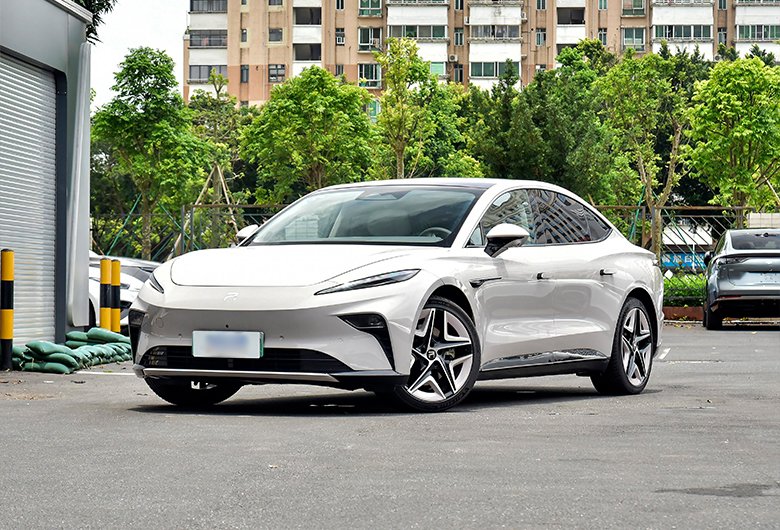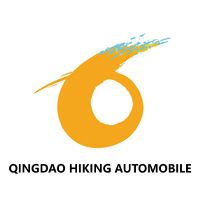
Description
- APPEARANCE
- INTERIOR
- SEAT SPACE
- DETAILS
I have sat on a lot of comfortable seats in the past, but they are usually concentrated in some larger-sized SUVs and executive-oriented sedan products, and if these seats are directly copied to new cars that often have to withstand large g values in the X and Y directions, In energy cars, human posture maintenance is often not ideal, which means that in the booming new energy market, especially the electric car market, "riding comfort" has always been a scarce value.
Feifan F7's seat comfort is not simply "soft". Its biggest feature is the fit of the human body curve based on ergonomics. I don't have actual measurement data, but an important indicator of fit is the backrest leaving. The point is very high, almost close to my shoulders and neck, and the entire thigh, hip, waist and back are under the right support, so that I can’t even think of the last one that gave me a similar experience. Which car is it? Is it really an S-Class? Or that "perverted" Lincoln Continental with more than 30-way adjustment? Such a good fit to the human body curve must be a small systematic project, which is related to the geometric size and cross-sectional design of the seat, the level, thickness, and density of the foam material, and also the functional adjustment of changing the seat profile. It is related to the project; and the ability of system engineering must be in one's own hands, and it is almost impossible for the supplier's public version solution to achieve such an effect.
The most direct benefit brought by the ultra-high fit to the human body curve is that the pressure distribution of the entire Feifan F7 seat is very ideal. To put it simply - low peak value, low average value, small fluctuation, and large area. If you use objective Data comparison, controlled variable testing under 95% specifications, shows that the pressure distribution of the Feifan F7 driver's seat is very close to that of the current S400 model, and the seat cushion contact area even exceeds it. This indeed exceeds our traditional understanding of products priced at 300,000 yuan. Know. Because there is no discomfort caused by a single or a few pressure peaks, the benefit of reasonable pressure distribution is that you will not feel tired after sitting for a long time. When I drove the F7 for a long time and long distances on highways, mountain roads, and urban-suburban roads with average road conditions, This feeling is especially obvious in the end. Finally, it is worth mentioning that although the seat geometry is very wide, and although the F7 is not a strongly sports-oriented product, this seat can provide lateral support and maintain human body posture during moderately intense driving and high-speed cornering. , the body will not fall to one side, and there is no need to compete with the steering wheel.
F7, my subjective impression of the dynamic aspect of this car has three core points - no need to adapt, stable posture, and free definition. The first time I used the F7, I switched directly from the Ji Krypton 001. The two cars are very different in terms of the ease of control. On the darkening rural roads, the F7 can be said to be able to move through the traffic with ease. This is certainly true. I am familiar with SAIC's products, but the F7's own driving characteristics also contribute a lot.
What is particularly worth mentioning is its steering and switch control, which are extremely linear and delicate, with a sense of proportion that gives more or less, a sense of uniformity in feedback damping, and the resulting control from turning the direction to the front of the car. From the response to the sense of communication between people and cars following the car, it can immediately bring a strong favorable impression to most people. As long as you enter the corner accurately, you almost don't have to correct the direction in the corner; if you bite the apex of the corner and firmly step on the deep switch, the vehicle can linearly approach the limit; if you sway back and forth in the corner, or In case of emergency avoidance and counterattack, the soft center of gravity shift will give you a strong sense of security. All in all, Feifan F7 is extremely easy to build expectations for the next dynamic change of the vehicle after active input.
Let’s talk about the stable posture of the F7. This is also not a simple roll control. On a road with large undulations and long waves, even if the vehicle speed is increased to 100km/h, the suspension will not be compressed or stretched to the limit regardless of the wave peaks or troughs. In this situation, the rear of the car will be firmly pulled every time it jumps up and down, and the force value of the shock absorber is extremely sophisticated. The same situation also occurs in the upper and lower axle conditions that are very common in the Yangtze River Delta region. Without the CDC to sense the impact and elevation changes of the front axle and immediately adjust the rear axle damping, the Feifan F7 will not be able to move up or down the axle. There will be no aftershocks at the bridge or the rear of the car. The stability of the rear of the car in the vertical direction is amazing. Under the same working conditions, neither ET7, 001, nor S-Class can compare with it. .
On the fine short-wave roads represented by Belgian roads, the second-order vibration control of the F7 suspension also reached a very high level. In these areas, which are usually regarded as the advantages of air suspension + CDC, the suspension is subjective. In terms of vibration filtering experience and comfort, the overall performance of the F7 is not significantly inferior. Even if it encounters strong excitation from the road, the F7 may be slightly inferior to the previously mentioned air-suspension models in terms of the impact peak of the body, but the subjective body feeling is very good. This is mainly reflected in the fact that under the same working conditions, the vibration control of the F7 is basically concentrated on In the vertical direction, both the ET7 and 001 models have relatively obvious front and rear pitches. From a certain perspective, whether it is a good driving feeling or a good feeling of comfort, the stable body posture can be regarded as its intuitive performance.
Super player mode is the answer given by Feifan F7. Its two core elements are two-wheel drive/four-wheel drive switching based on the front axle one-way clutch, and ESC/TCS can steplessly adjust the intervention intensity and can be completely closed. Unlike ET7 and 001, which equally distribute power to the front and rear, Feifan F7's power design of 150kW/250N·m in the front and 250kW/450N·m in the rear naturally has better playability. Due to the large torque of the rear axle and the consistent width of the front and rear tires, when the rear drive + ESC is turned off, the F7 rear axle can easily break through the limit of grip and start drifting. The delicate directional control and gentle center of gravity transfer can also make the F7 drift in the reverse direction. When steering, let the vehicle "walk sideways" very stably, and then through the correction of the throttle and direction, stable circular drift is easier than most vehicles. When attacking high-speed corners on a general track, the power distribution can be adjusted to the system's built-in power distribution of 3 in the front and 7 in the rear to help the vehicle enter the corner by obtaining an oversteering tendency. That little bit of rear-end swing is really just right. A stroke of genius.
In addition to giving full play to the advantage of high-torque rear-wheel drive driving pleasure, since the one-way clutch structure can completely disengage the mechanical connection, under two-wheel drive cruising conditions, the F7 has no dragging feeling and almost no additional energy loss. It takes into account the energy consumption of two-wheel drive and the performance of four-wheel drive.
And all of this is inseparable from the free definition of F7. The premise for the integration of man and car is to be the owner of the car.
Inquiry
F7
| Model: | F7 |
| 0-100km/H: | 6.7 |
| CLTC (KM): | 500 |
| L-W-H (mm): | 5000*1953*1494 |
| Drive Type: | Electric Car |
Inquiry Now






























